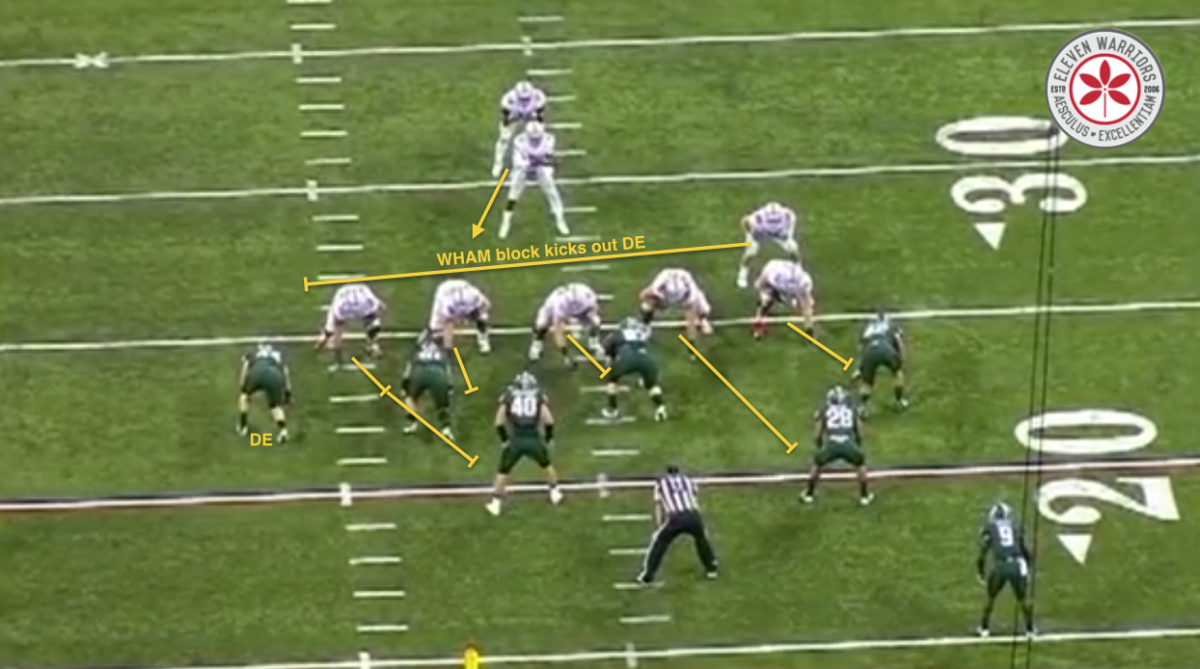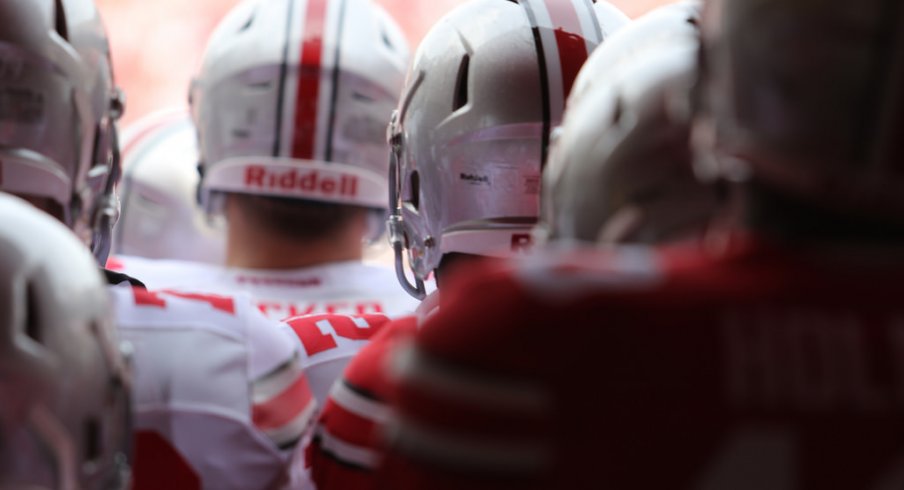In these Film Study sessions, we often refer to a number of concepts, positions, or techniques without often explaining what they really mean. As we inch closer to the glorious return of college football, there is no better time to get everyone who finds their way to 11W on the same page.
The list below is by no means complete, we've tried to define some of the concepts that we most often reference specifically in regards to Ohio State football. For those looking for a deeper understanding of the game overall, Chris B. Brown of SmartFootball.com compiled a collection of definitions here that should be required reading for all fans, regardless of allegiance or prior knowledge of the game.
3-Technique defensive tackle – The name of the defensive tackle that is not lined up over the center (aka the nose guard). With the Buckeyes’ four-man front, each linemen aligns in a gap between offensive linemen, instead of directly over them.
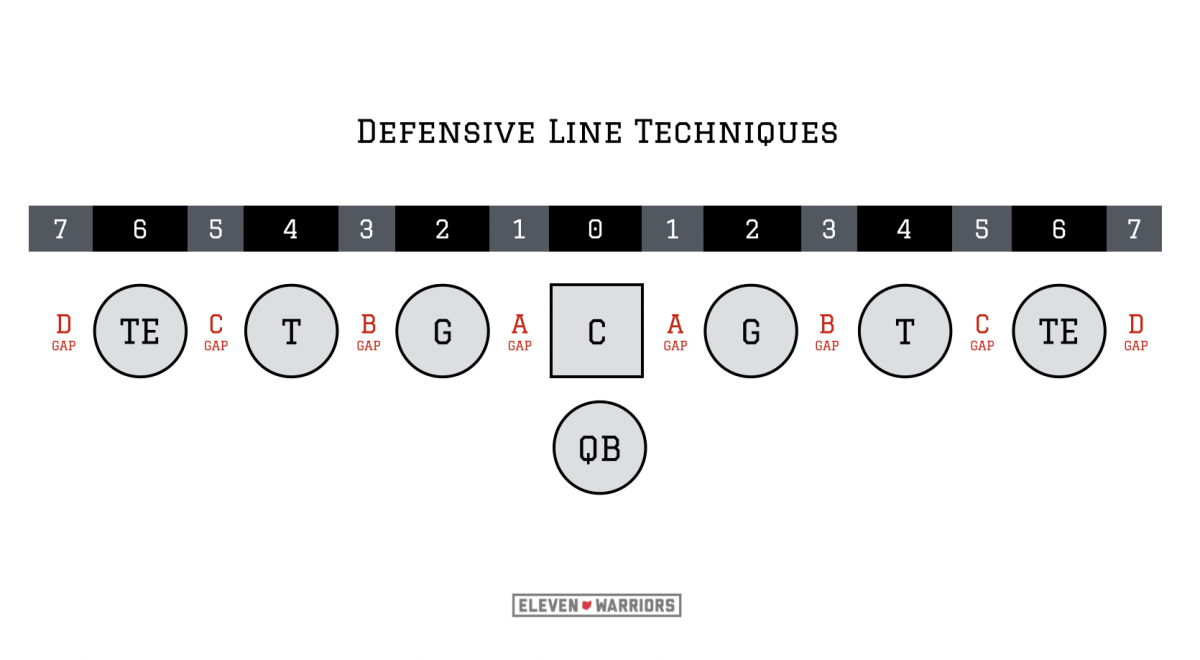
Given the location of the nose, they face double-team blocks in the run game on nearly every play, while the 3-technique often gets more one-on-one opportunities to beat an opponent and make plays in the backfield. Michael Bennett manned this spot for the past two years, with Adolphus Washington is expected to fill the role in 2015. Read more about the differences between the two tackle spots HERE.
Bear front – A defensive look made famous by the 1985 Chicago Bears, where a defensive linemen lines up directly across from the center and both guards, clogging the interior and keeping the linebackers behind them unblocked. Virginia Tech used this front to stuff the Buckeyes’ running game in their 2014 win over OSU, leading every opponent that followed to use some version of the look, although with much less success. Like any alignment, when an offense expects it, they are able to easily adjust to it, which in this case simply meant attacking the edges with more outside runs behind the tackles and tight end. Read more about the Bear and how the Buckeyes adjusted to it HERE.
Field & Boundary cornerbacks – The designation for the wide and short side cornerbacks. Though the Buckeyes don’t always line up in this way, they often line up their best cornerback to the boundary side, as even though there is less ground to cover, there is one less defender to that side, meaning there is more pressure to make a play in space. Doran Grant manned this spot in 2014, while Eli Apple looks destined to take over this fall.
Follow pivot – A long-time staple of Meyer’s offenses at Utah, Florida, and now in Columbus that attacks zone coverages. Often run from four-wide or empty formations, the concept tries to stretch the inside linebackers horizontally underneath with two inside receivers appearing to run crossing routes before settling quickly in a zone with “pivot” routes. They’re instructed to only break back to the outside (as the diagram shows) if their defender is playing man coverage.
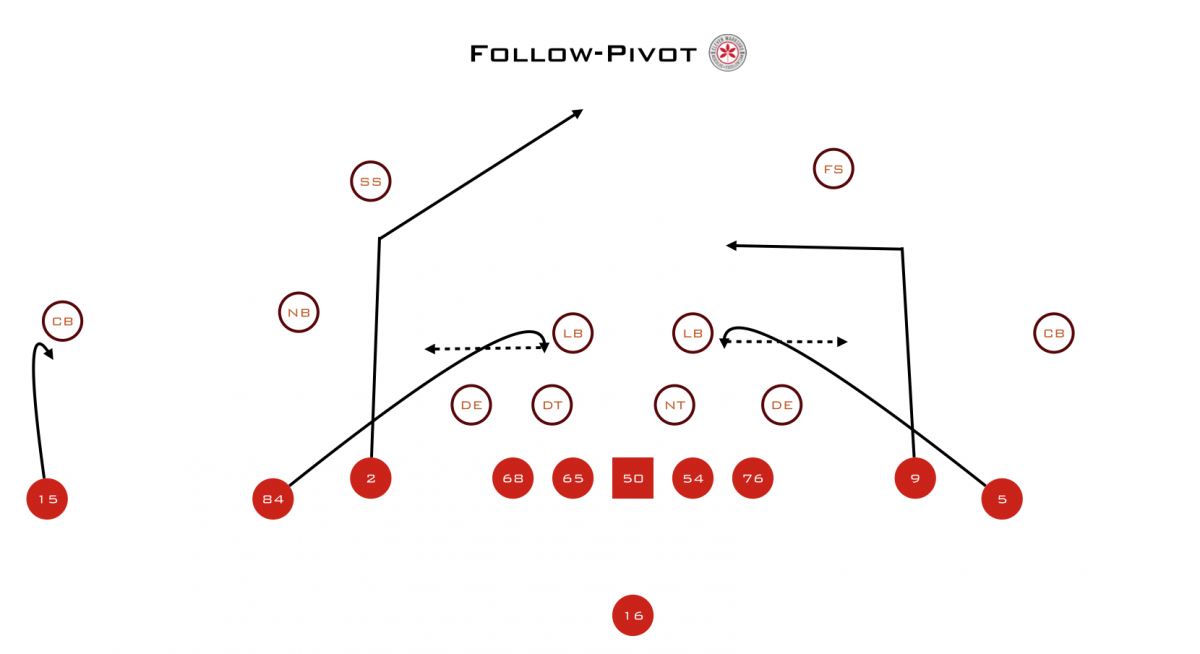
Behind them though, is a vertical stretch on the safeties, as one wide receiver runs a deep post while the other runs a 12-yard ‘Dig’ route. The result is an easy read down the middle of the field for the QB, going Pivot-Dig-Pivot in their read.
‘H’ back – The name for the primary slot receiver in the Buckeye offense. Traditionally, backs and receivers are assigned letters for play-calling purposes, with the split receiver that lines up on the line (split end) given X, the tight end Y, and the receiver off the line (or flanker) Z.

H Option – An 8-10 yard option route for the slot receiver that was called regularly for Philly Brown in 2012. With the other receiver(s) to their side clearing out deep, the slot receiver simply makes a cut inside or out, depending on the shade of his defender, running away to create space. If no defender is nearby, the slot runs a simple hitch. There is often a backside option route called with it to give the quarterback an easy horizontal progression.
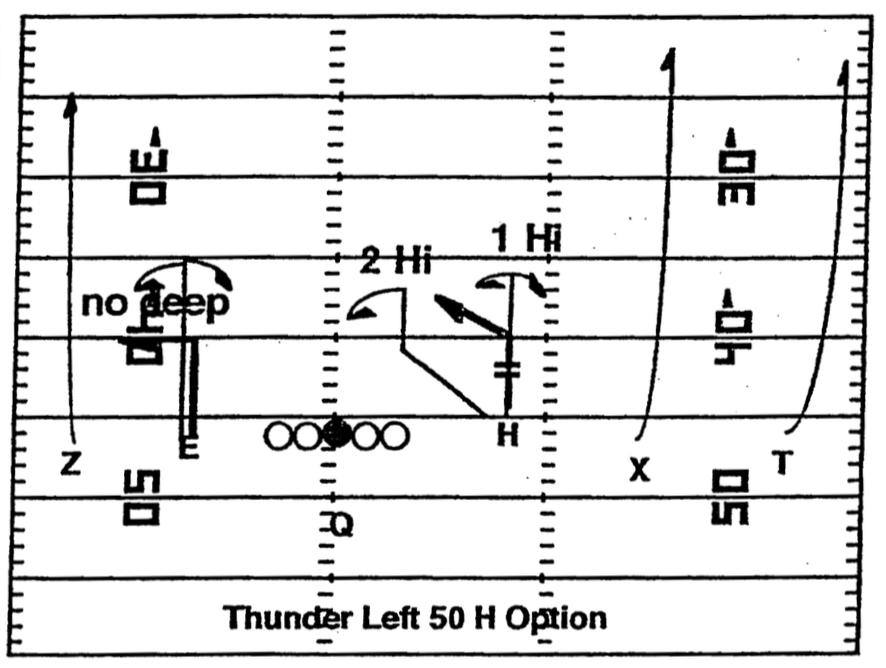
Packaged run-pass options – Combining a run play with a short passing play, often a screen, slant, or hitch, where the QB reads one specific defender to determine where to give the ball. Much like any option play, the goal is to make one defender wrong, no matter what they do. So, if an alley defender such as an outside linebacker crashes inside after seeing the OL block a running play, he can no longer assist on a WR screen pass to his side, and vice-versa. If read correctly, the offense will always have a numeric advantage over the defense in the direction the ball is headed.
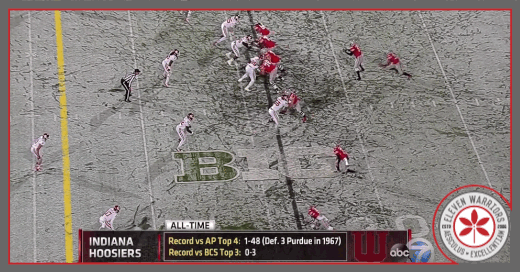
The QB is the only player tasked with making a decision, as the other ten players carry out their assignment regardless of whether they get the ball or not. Read more about packaged plays HERE and HERE.
Quarters coverage – Also known as ‘Cover 4,’ this is the base coverage of the OSU secondary under coordinator Chris Ash, with each defensive back assigned to cover a deep ¼ of the field. The strength of the coverage comes when there are not four receivers running deep, as the coverage flexes to accommodate crossing routes, and allowing the safeties to keep their eyes in the backfield to assist in the running game. Read more about Ash’s quarters coverage HERE.
SAM linebacker – The strong-side linebacker position currently manned by Darron Lee. In many systems, the SAM ‘backer is the biggest of the three linebackers, lining up on the line of scrimmage. With Ash’s arrival in 2014, the SAM became a hybrid player, lining up outside the box to the wide side of the field, splitting the difference between the tackle and slot receiver.
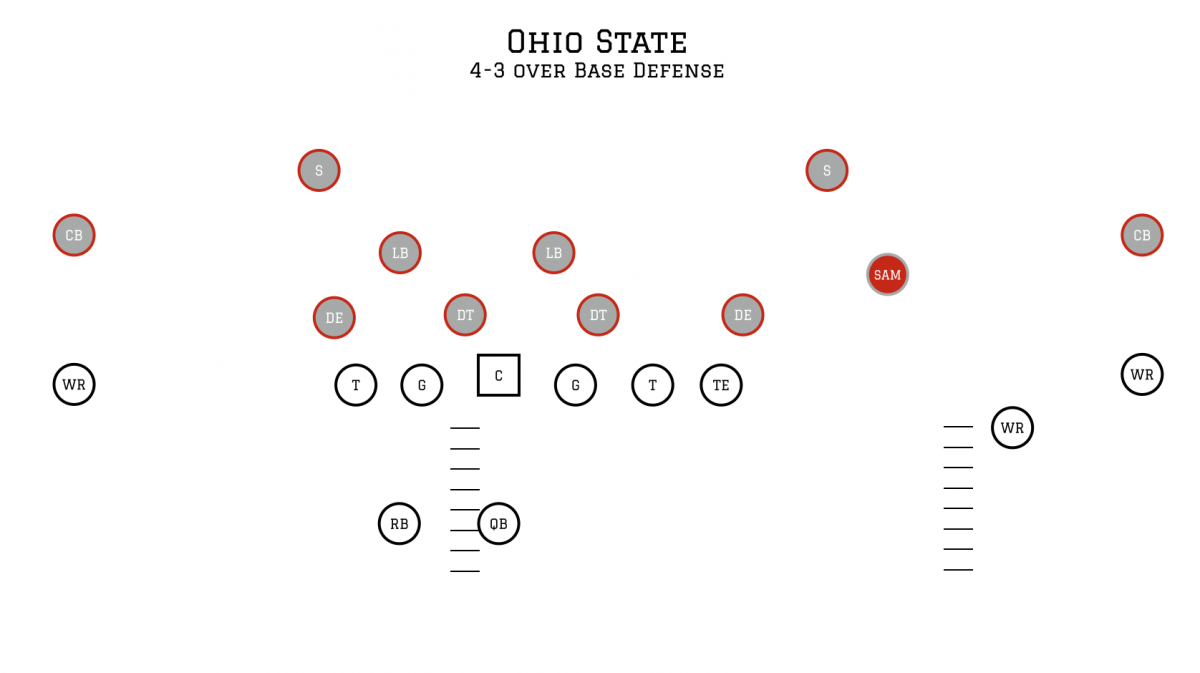
Ash looks for smaller, athletic players like Lee that can still hold up inside the tackles, but still be quick enough to make plays in space, such as shutting down screen passes.
Tight zone – The name for the inside-zone blocked running play that is the foundation of Meyer’s offense. Though appearing to be a simple, straight-ahead run on paper, there are countless rules and techniques that must be mastered by all five members of the offensive line in order for the play to consistently perform properly.

When it can be stopped (such as in the 2014 Virginia Tech game), the OSU offense rarely gets off the ground. Read more about the Tight Zone HERE, HERE, and HERE.
Wham block – A backside block from a tight end/fullback that opens a cutback lane for the running back in the tight zone play. Since the backside defensive end is often the man getting read in the option game, he isn’t always looking for a tight end to come across the formation, especially given that the tight end has all the leverage coming into the collision.
